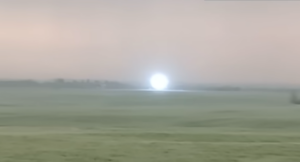A passion for the natural world drives many of our adventures. And when we’re not outside, we love delving into discoveries about the places we live and travel. Here are some of the best natural history links we’ve found this week.
Life inside a droplet of seawater: Each drop of seawater contains thousands of minute plankton and copepods, invisible to the naked eye. For three years, wildlife photographer Angel Fitor has captured astonishing images of life within these droplets.
“I imagined each water droplet as an aquarium…a window into a whole new world,” he said.
To make sure the water didn’t evaporate and the animals didn’t overheat, he used LED lighting and heavy air conditioning. He didn’t want the copepods to die, as they quickly lose their vivid coloring. There are over 13,000 species of copepod. These tiny crustaceans occur in every body of water on Earth.
The mystery of dark earth
Indigenous people create the Amazon’s dark earth: Dark earth in the Amazon refers to areas of the land that have darker soil, are rich in carbon, and are unusually fertile. These mysterious patches are scattered across the Amazon River Basin.
Researchers have discovered that the indigenous Kuikuro people in southeastern Brazil create a similar soil around their villages. This suggests that ancient Amazonians may have done the same thing.
Though many in the West think of the Amazon as untouched, indigenous people have actively been shaping it for thousands of years. While some archaeologists argue they created this dark earth, others credit geological processes.

Columbia Basin pygmy rabbit. Photo: Shutterstock
The struggle to save the world’s tiniest rabbit: The Columbia Basin pygmy rabbit is the smallest rabbit in the world. They are the size of a softball and weigh less than a pound.
Over the last 100 years, much of their wild habitat has become farms and ranches, and their population has plummeted. Although scientists crossbred the little rabbit with another species to try to save it, only a few hundred remain.
“I don’t think people realize how close they are to extinction,” said biologist Jon Gaille. “They barely live two years. If you have two bad years, you are almost done.”
Scientists have been breeding them in semi-captivity and releasing them into the wild as juveniles, but very few have survived. They are now trying to adapt their breeding pens to be more like the rabbits’ wild habitat. Hopefully, this will give a better chance of survival.
Never miss another space event
Sync your calendar with the solar system: A downloadable calendar ensures that you will never miss any astronomical event. From eclipses and meteor showers to rocket launches, a number of events are already scheduled. Those that don’t yet will have dates added throughout the year.
The calendar starts with the 20th anniversary of the Space Shuttle Columbia disaster on February 1, when all seven astronauts died. Later in the year, Japan launches a space telescope and lunar lander mission. And the European Space Agency will launch a spacecraft to Jupiter. The calendar gives the timing for all these and more.

Honeybees working on honey cells. Photo: Shutterstock
Vaccinating honeybees
U.S. approves vaccination for honeybees: The U.S. has approved the world’s first vaccine for honeybees. Populations of honeybees are dealing with foulbrood disease, a bacterial infection that attacks bee larvae.
The vaccine will be inserted into the royal jelly that is fed to the queen bee. All her larvae will then gain immunity.
The disease is such a big problem because it is highly contagious. If a colony of bees becomes infected, there is no treatment. You have to burn the infected colony and then treat all surrounding colonies with antibiotics.
Bees are essential pollinators and are responsible for a third of the world’s crop production.
Half of replanted tropical trees don’t survive: Across the tropics, half of the trees planted in first restoration projects do not survive for more than five years. Scientists studied 176 restoration sites across tropical and subtropical Asia.
Between 1990 and 2010, deforestation destroyed 32 million hectares of forests in South East Asia. These are essential habitats for tigers, primates, and elephants, so have become a central location for restoration projects.
Completely deforested sites recovered far more poorly, while trees planted in regions with existing mature trees had a 20% higher chance of survival.






